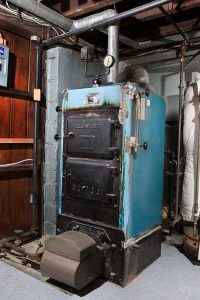 We’ve talked about this topic before, but it was a few years ago—and it’s one of the most important subjects to know about when it comes to home heating. Gas furnaces are the most common type of home heating systems, and cracked heat exchangers in gas furnaces are a major problem and serious potential safety hazard. Understanding the cracked heat exchanger can be a real lifesaver!
We’ve talked about this topic before, but it was a few years ago—and it’s one of the most important subjects to know about when it comes to home heating. Gas furnaces are the most common type of home heating systems, and cracked heat exchangers in gas furnaces are a major problem and serious potential safety hazard. Understanding the cracked heat exchanger can be a real lifesaver!
What the Heat Exchanger Does
First things first: What is the job of the heat exchanger? Just what is it?
The simple answer is that the heat exchanger is the part of a gas furnace that actually heats the air. The general definition of heat exchanger (they’re found in many appliances) is a component that allows heat to pass between two liquids or gases without letting the two come into contact.
The heat exchanger in the gas furnace allows the heat from the combustion gas from the burners to be transferred to the air blown through the system and into the ductwork. You don’t want the gases inside the heat exchanger to enter the air which is heading into the ducts, since it contains harmful gases such as carbon monoxide. The gas remains separate from the air entering the ventilation system by heating up the metal walls of the heat exchanger so the heat then transfers into the air. The combustion gases are then vented out of the furnace through a flue. (Or, in the case of a high-efficiency condensing furnace, the gases go into a second heat exchanger to extract even more heat.)
Why Heat Exchangers Can Crack
The heat exchanger in a gas furnace is built to be sturdy and sealed. But cracks can happen because of years of stress on the metal. Each time the metal heats up, it expands, and then it contracts as it cools off. This may lead to weakening of the material and the development of cracks over years. This is one of the reasons we recommend replacing a furnace that is more than 15 years old, even if it still appears to be working well.
Corrosion is the other big source of cracks in a heat exchanger. Corrosion can set in on the metal if the heat exchanger isn’t venting properly or if the system hasn’t received regular maintenance. (Yet another reason to always have maintenance done each year.)
Finding and Fixing Cracked Heat Exchangers
If a heat exchanger cracks, you may start to hear a clicking noise when the blower fan shuts off. Call for repairs ASAP when you hear this noise and shut off the gas to the furnace. If your CO detectors go off, have technicians examine the furnace after you’ve left the home and had the gas company check for safety. Regular maintenance is also a time when technicians will closely examine the heat exchanger to catch cracks or spots of corrosion.
A cracked heat exchanger must be replaced, or the furnace replaced. For an older furnace, we strongly recommend that latter. But you can trust our professionals for the best advice on heating in Haughton, LA.


